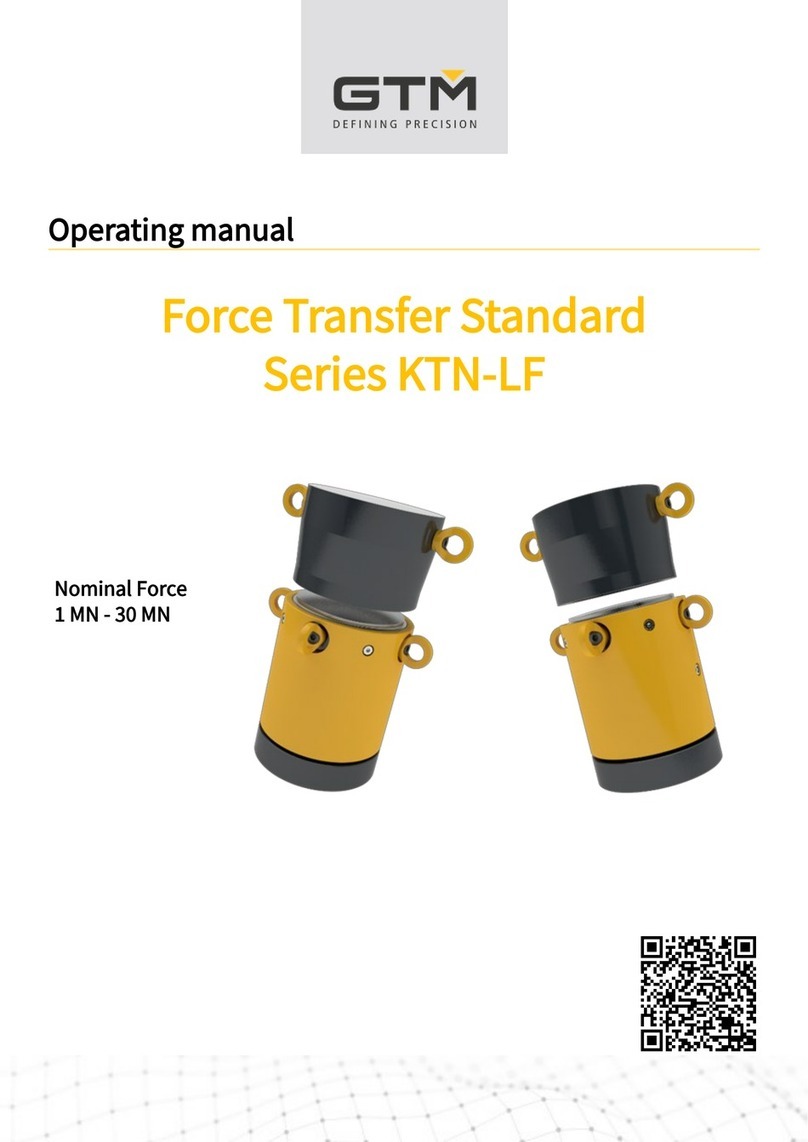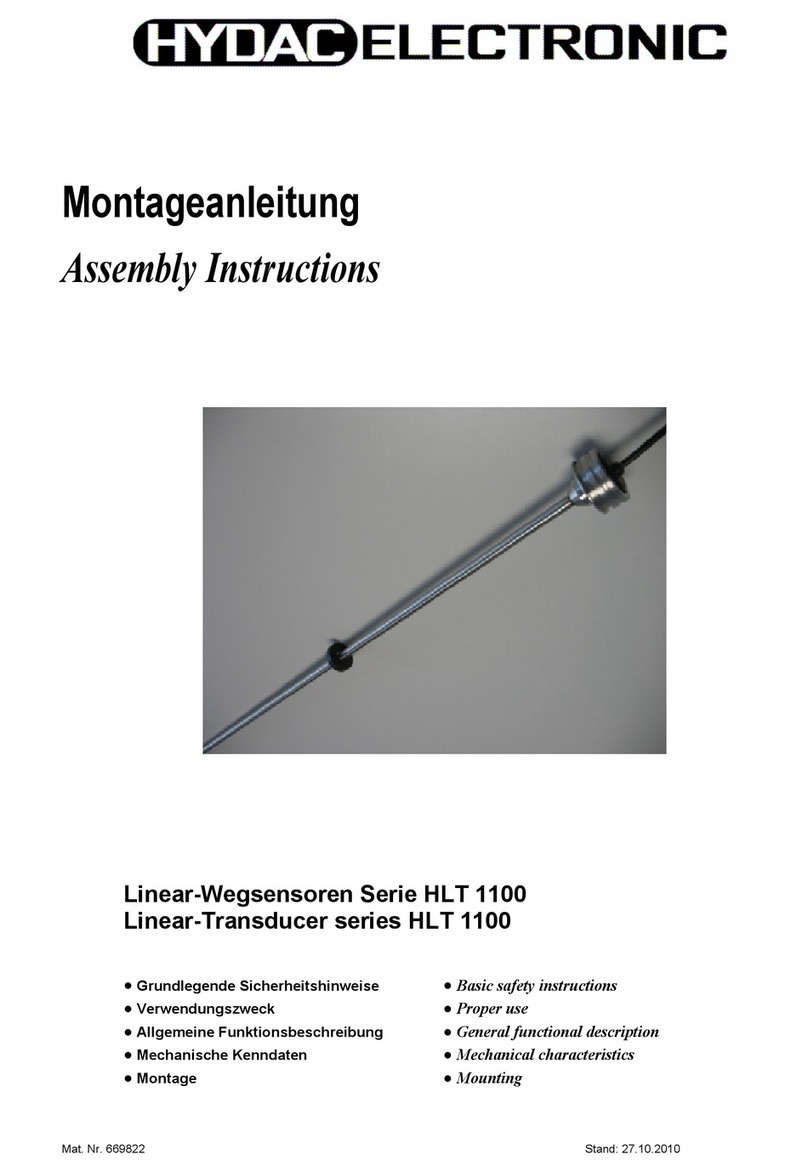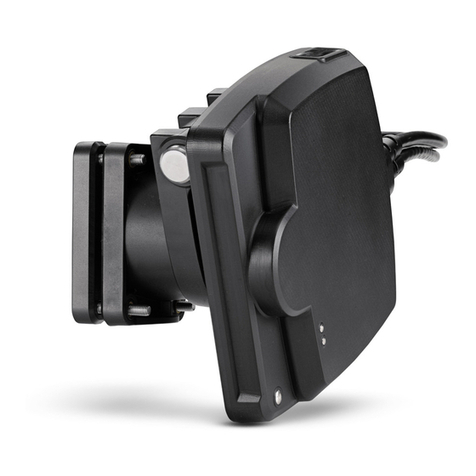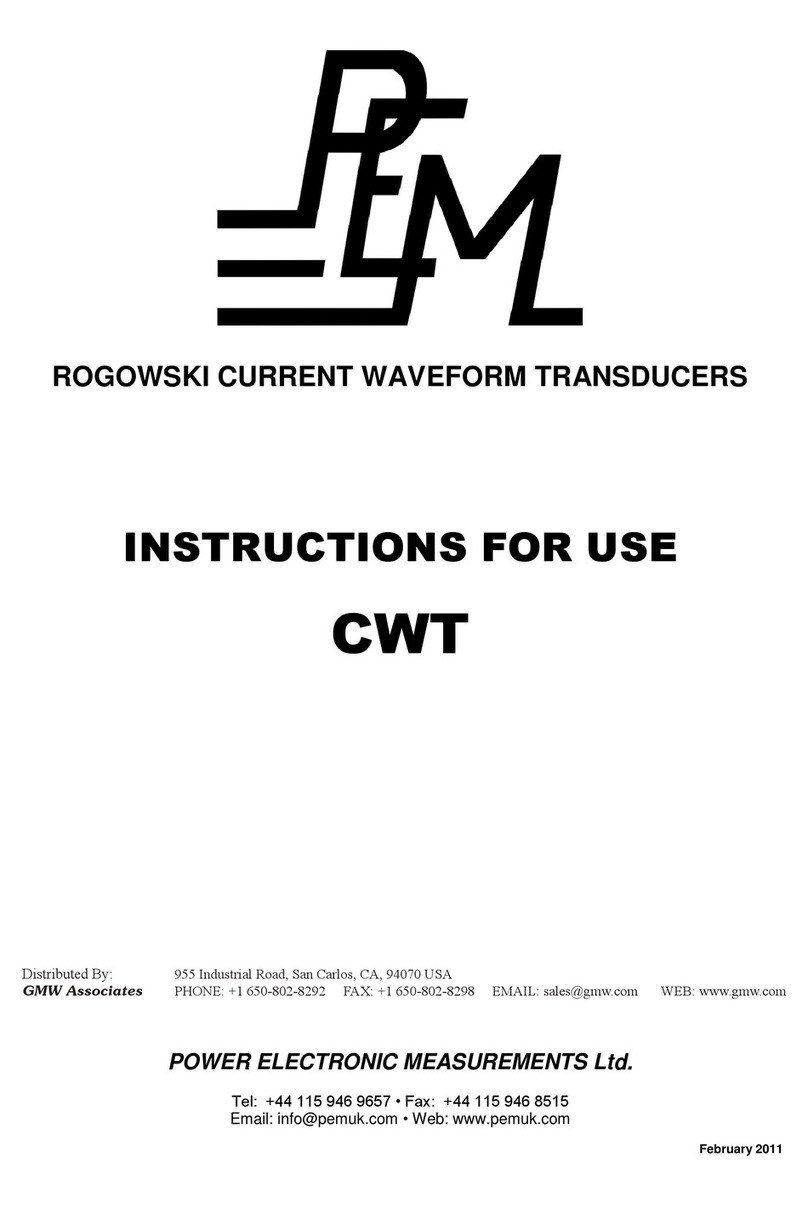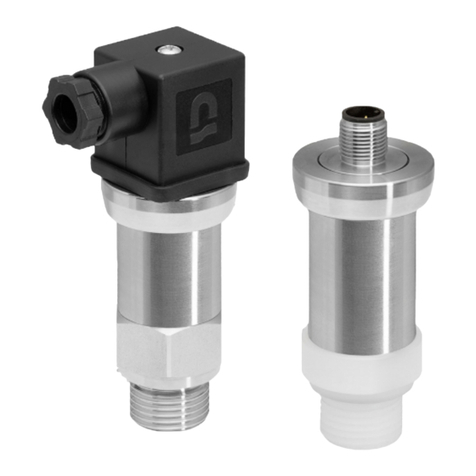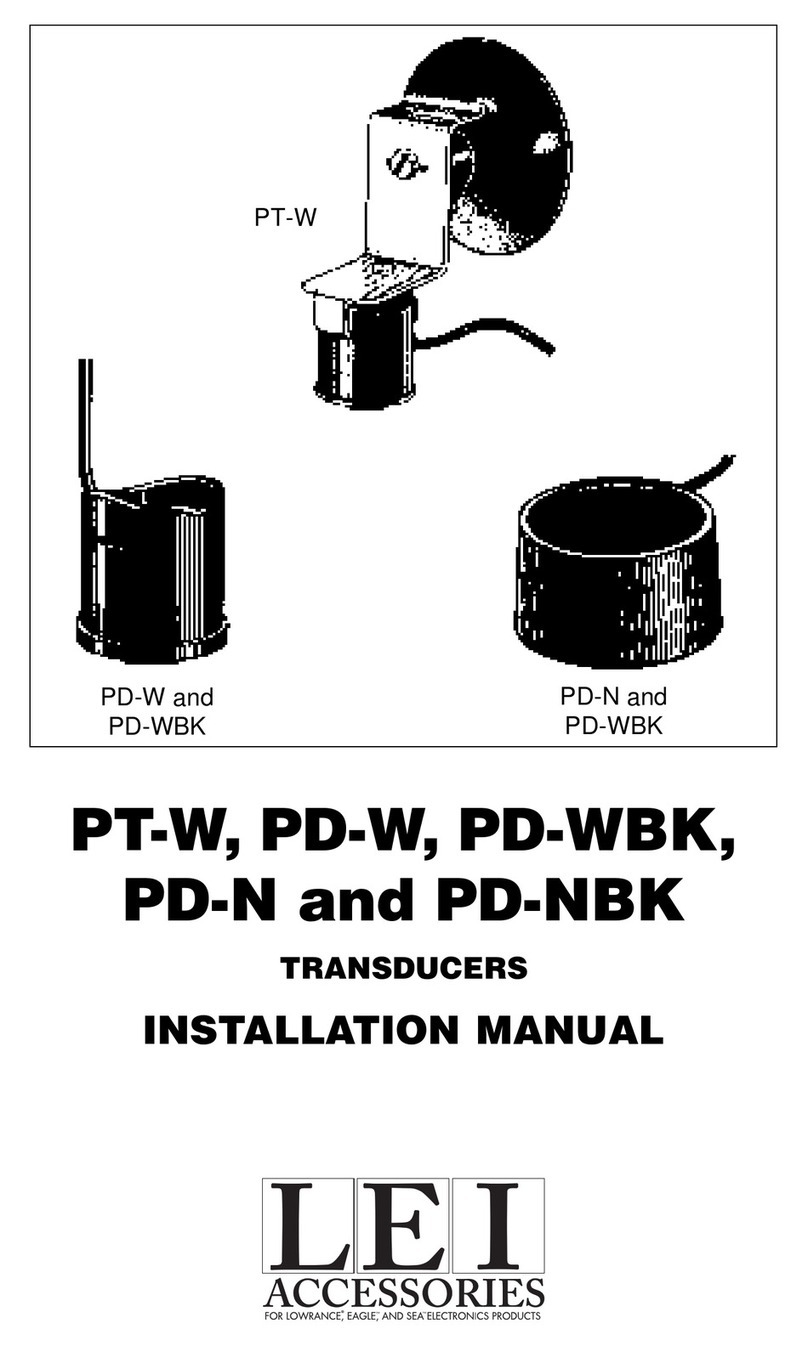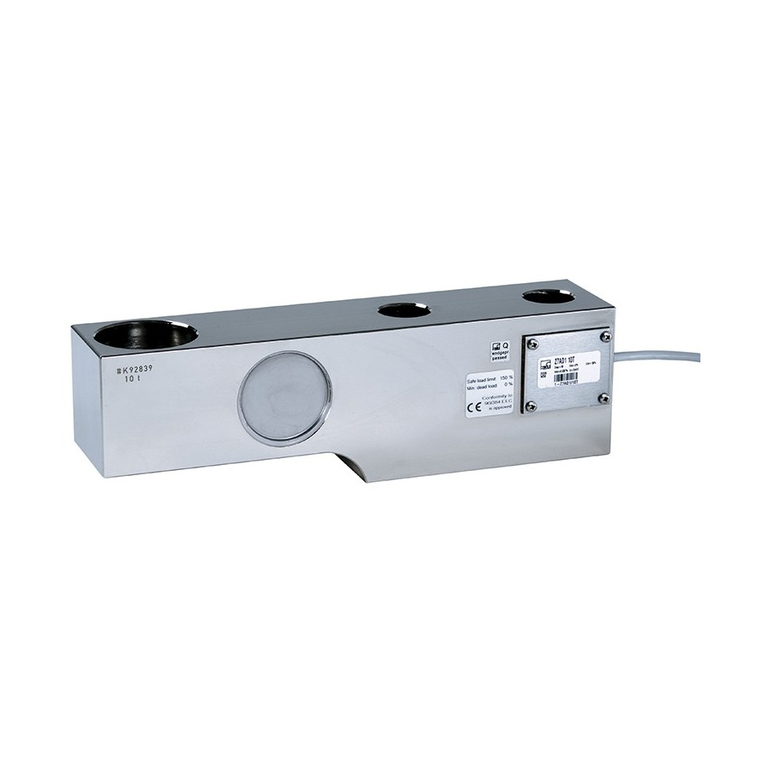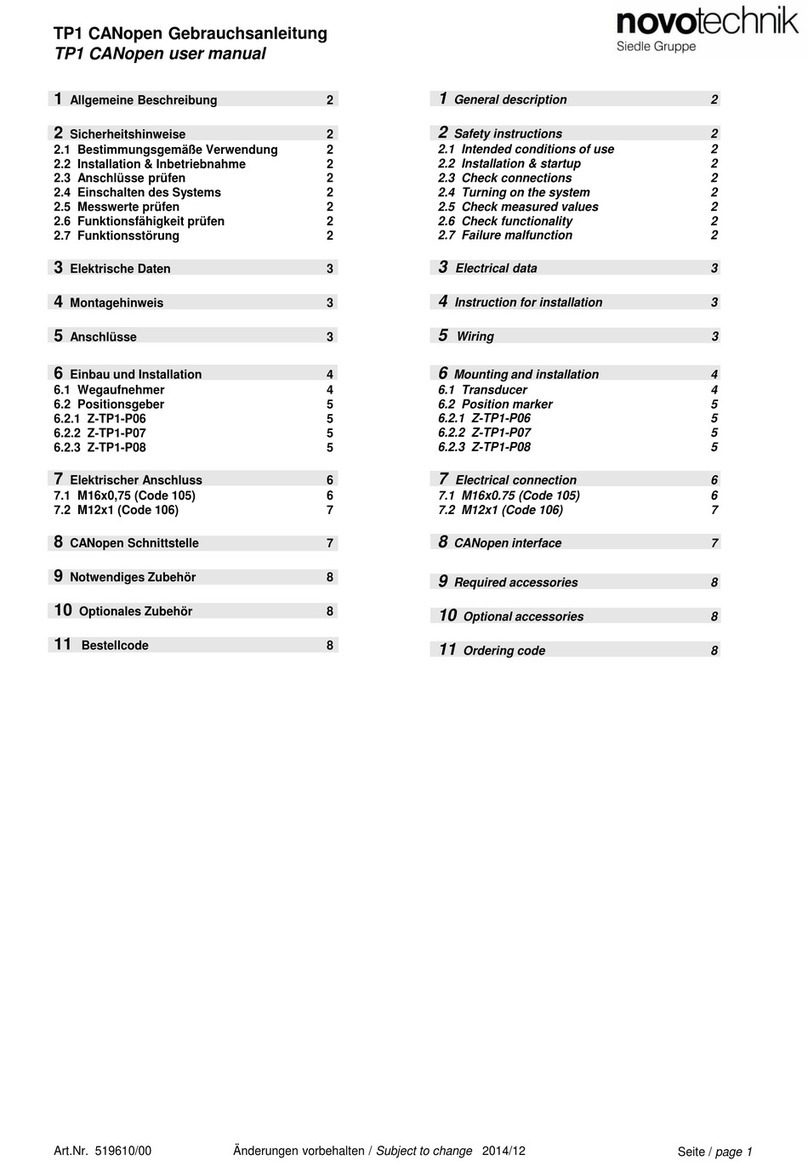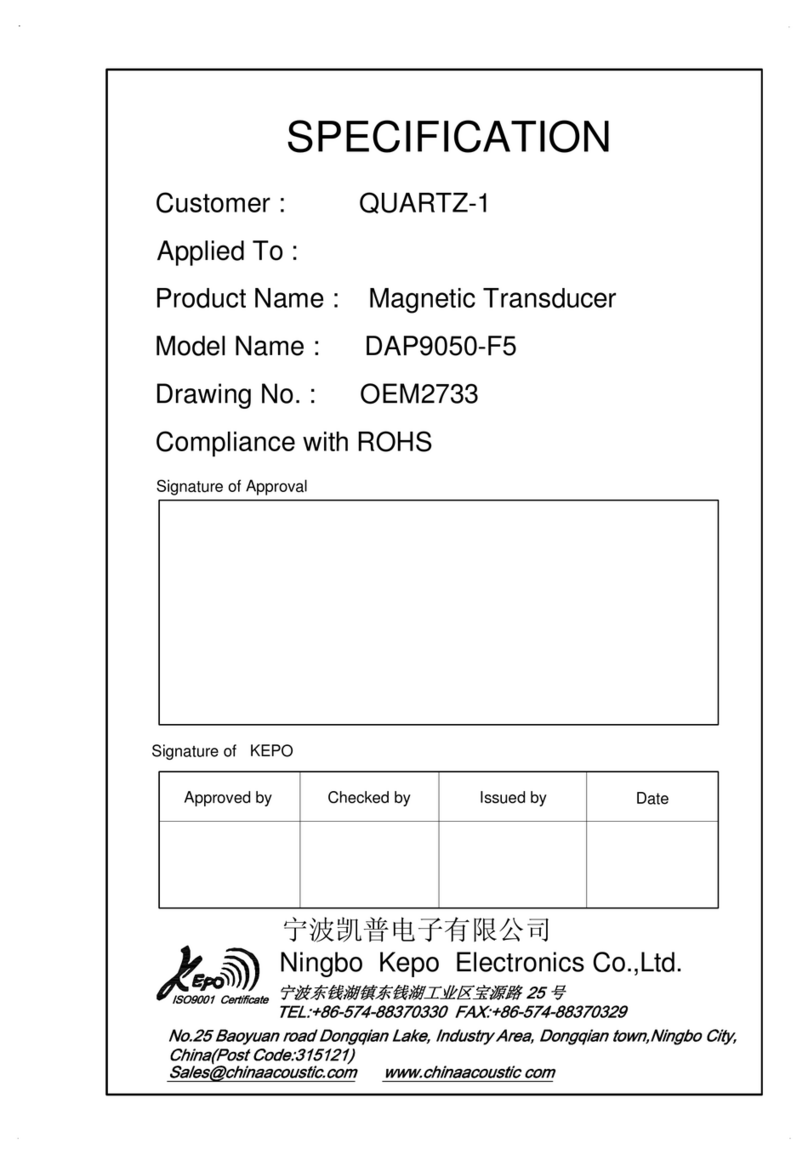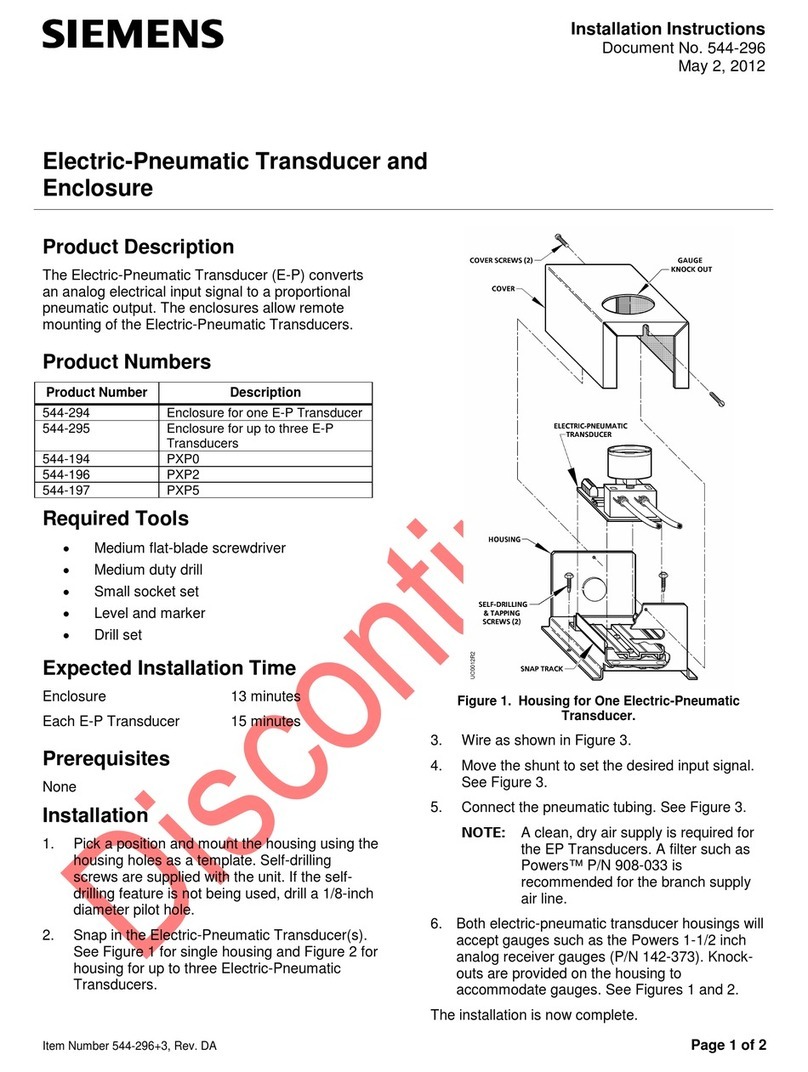NK VTD-BD Series User manual

1. Ensure correct sensor model was chosen for Input Volt-
age of application.
2. Mount the sensor to aDIN rail usingintegrated mounting
clip on backside of transducer or secure using the tabs
in each corner.
3. Connect monitored voltage to term. (2) & (1) and out-
put wiring using 22-16 AWG copper wires insulated to
75/90°. Lift the orange clip on the terminal, insert wire
and allow it to clamp on the stripped end of the wire.
Refer to “Output Wiring” section for voltage and imped-
ance recommendations.
IMPORTANT:Monitoredvoltage(V1/V2)polaritysensi-
tive for output polarity.
4. Connect 24VAC or DC power supply fused to 5 amp to
term. 3-4. Use twisted pair for CE compliance.
5. Connect output to the load using terminal 6 for the output
signal, and terminal 5 to common.
6. Energize primary circuit and sensor power.
VTD 1 - 010 - 24U - BD - OS
OUTPUT:
005 - +/-5VDC
010 - +/-10VDC
VOLTAGE INPUT RANGE:
0 - 15VDC
1 - 25VDC
2 - 50VDC
3 - 150VDC
4 - 300VDC
5 - 600 VDC
SENSOR TYPE:
VTD - DC Voltage Transducers
Model Number KeySpecifications
Quick “How To” Guide
OUTPUT TYPE:
BD - Bidirectional
POWER SUPPLY:
24U - 24 VAC/DC
3511 Charter Park Drive, San Jose, CA 95136
800-959-4014 or 408-871-7510 Phone
408-871-7515 FAX
Know Your Power
Other NK Technologies Products Include:
AC & DC Current Transducers
AC & DC Current Operated Switches
1φ& 3φ Power Transducers
Current & Potential Transformers (CTs & PTs)
External Power Supply 24VAC/DC (22-26V)
Power Consumption <2VA Use class 2 power supply
Voltage Measurement 0-15, 25, 50, 150, 300 or 600 VDC
Monitored Line Impedance >160K ohms
Output +/-5 VDC
+/-10 VDC
Response Time 250 ms (10% to 90% value)
Accuracy < 1% Full Scale
Output Impedance >10K Ohms for stated accuracy
Isolation Voltage 2500 Volts
Frequency Range DC only
Operating Temp. -20°C to 50°C
(surrounding sensor)
Enclosure UL94 V0 Rated
Environmental -4 to 122 ° F
(-20 to 50° C),0–95% RH
Pollution Degree 2
Altitude to 2000 meters
Listings Designed for UL/cUL, CE
Warning! Risk of danger
Safe operation can only be guaranteed if the
transducer is used for the purpose for which is
was designed and within the limits of the techni-
cal specifications. When this symbol is used, it
means you must consult all documentation to
understand the nature of potential hazards and
the action required to avoid them.
Warning! Risk of electrical shock
When operating the transducer certain parts may
carry hazardous live voltage (e.g. primary con-
ductors, power supply). The transducer should
not be put into operation if the installation is not
complete.
For products intended for the EU market, the following is ap-
plicable to the CE compliance of the product:
The VTD-BD series are designed to comply with EN 61010-1
CAT III 600V max measurement category. Use 24 V input power
and fuse at 5 amps. Power source overvoltage category I as
defined per EN 61010-1
VTD-BD SERIES
Bidirectional DC Voltage Transducers
+/-5 or +/-10VDC Output
INSTRUCTIONS
HOUSING:
OS - Oval DIN Mtg.

VTD-BD transducers feature a DIN rail compatible enclo-
sure and are typically located in the same environment as
motors, contactors, heaters, pull-boxes, and other electrical
enclosures.
To mount on DIN rail: Orient transducer so that line volt-
age terminals (1) and (2) are upright/on top of unit and snap
securely onto DIN rail. To remove, insert small screwdriver
into the slots and pry the two mounting springs down until
unit dislodges from DIN rail.
To mount using screws: Insert screws and mount to back
plane or other suitably flat surface.
Description
Installation
Output Wiring
VTD-BD Series Voltage Transducers are designed to moni-
tor DC voltage and detect conditions where supply voltage
is above or below normal. Detecting such conditions helps
users to avoid problems commonly associated with voltage
irregularities such as motor overheating, brownouts and
conductor failure or poor connections. The VTD-BD is
available with +/-5 or +/-10 VDC output options, so it will
produce a signal proportional to the voltage when the DC
voltage polarity is standard or reversed.
1. Transducer has no output
A. Power supply is not properly sized. Check power supply
voltage and output rating. Each transducer requires less
than 2VA to operate.
2. Output Signal Too Low or Too High
Transducer model improperly sized for application. Determine
the normal operating voltage of your monitored circuit and
ensure transducer selected has a range equal to or slightly
higher than the normal operating voltage.
3. Sensor output is always at zero voltage:
Primary circuit is not on. Check that the monitored voltage is
actually switched on, and that any fuses used are intact.
4. Sensor is always at or 5/10VDC
Voltage is higher than transducer range. Select a higher range
product.
Troubleshooting Tips
Line Voltage Wiring Connection
CAUTION: TO AVOID ANY POTENTIAL FOR SHOCK
OR SAFETY HAZARD, ENSURE LINE VOLTAGE IS
DISCONNECTED AT SOURCE BEFORE WIRING TO
UNIT.
Connect input voltage to be monitored to terminals (1) and
(2) on transducer using up to 16 AWG copper wires. Lift
the orange clip, insert the stripped wire and release the clip.
Proper torque will be applied.
POWER SUPPLY
OUTPUT SIGNAL
+/-0-5VDC
+/-0-10VDC
(1)
(2)
(6)(5)(4)
(3)
Monitored Voltage
GROUND
GREEN LED
POWER ON
V2 V1
Use twisted pair for power supply conductors for full com-
pliance with CE directives.
Note: Voltage output will be linear in the same manner, with zero
at zero primary voltage and +/-5 or +/-10 VDC at the full range
measured voltage, depending on the primary voltage polarity.
Connect control or monitoring wires to the sensor. Use up to
14 AWG copper wire insulated to 75/90°C and tighten termi-
nals 3-6 to7 inch-pounds torque.
+FS-FS
Output
Monitored Voltage Range
Bidirectional Output
0% +100%-100%
+10V
-10V
0V
+5V
-5V
0V
With positive of the monitored voltage at-
tached to terminal one, the output will be
positive. With negative attached to terminal
one, the output will be negative.
This manual suits for next models
1
Popular Transducer manuals by other brands
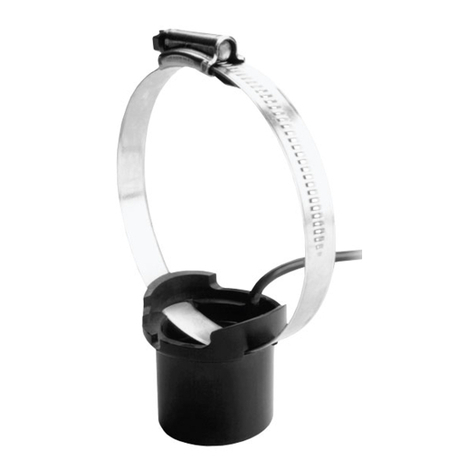
Airmar
Airmar P72 Owner's guide & installation instructions

BECKWITH ELECTRIC
BECKWITH ELECTRIC M-0214 Instruction book
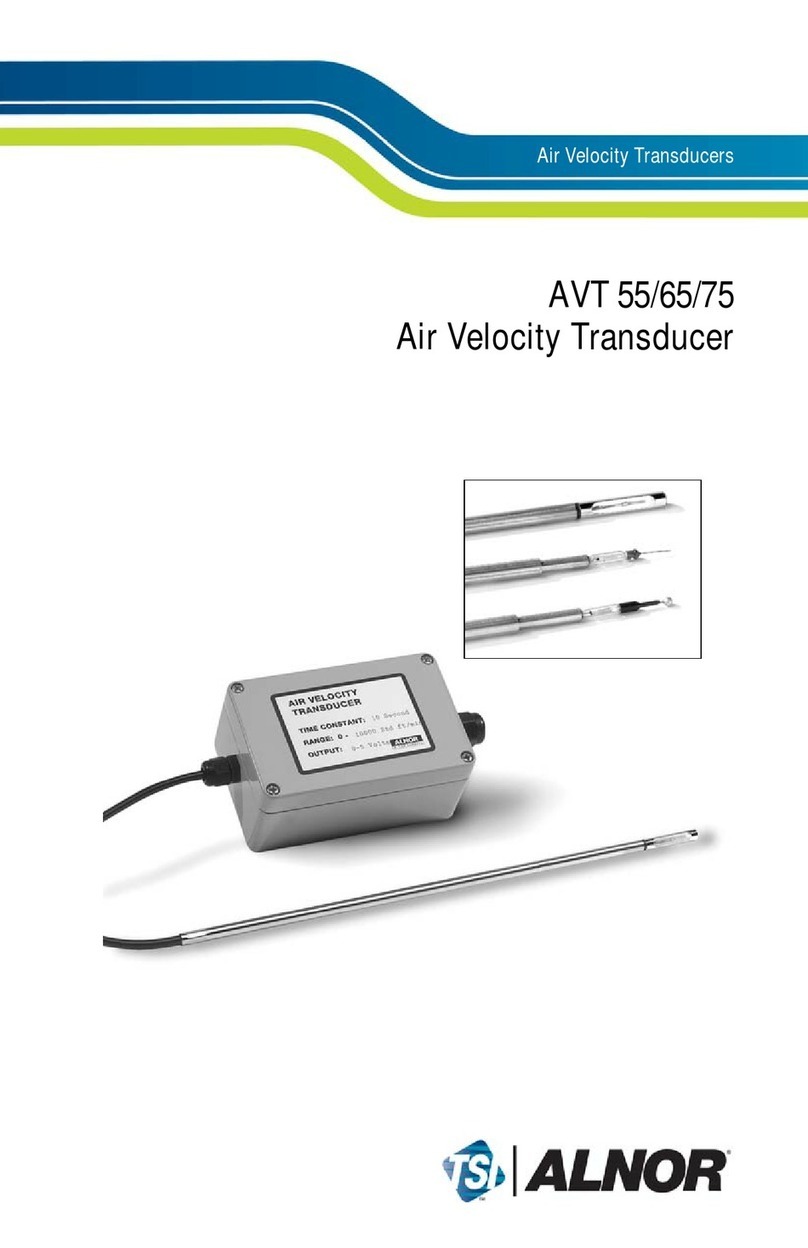
TSI Instruments
TSI Instruments ALNOR AVT 55 manual
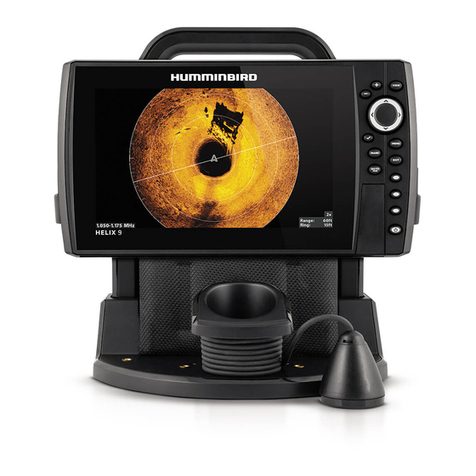
Humminbird
Humminbird ICE HELIX Series installation guide
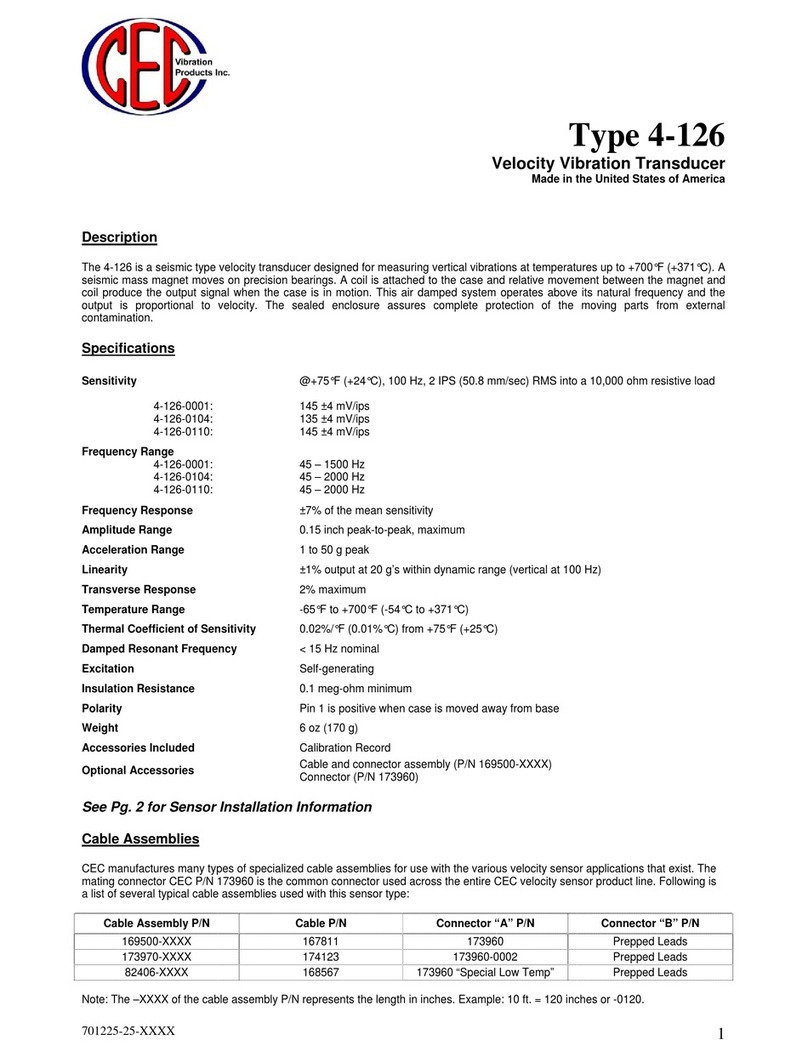
cec
cec 4-126 quick start guide
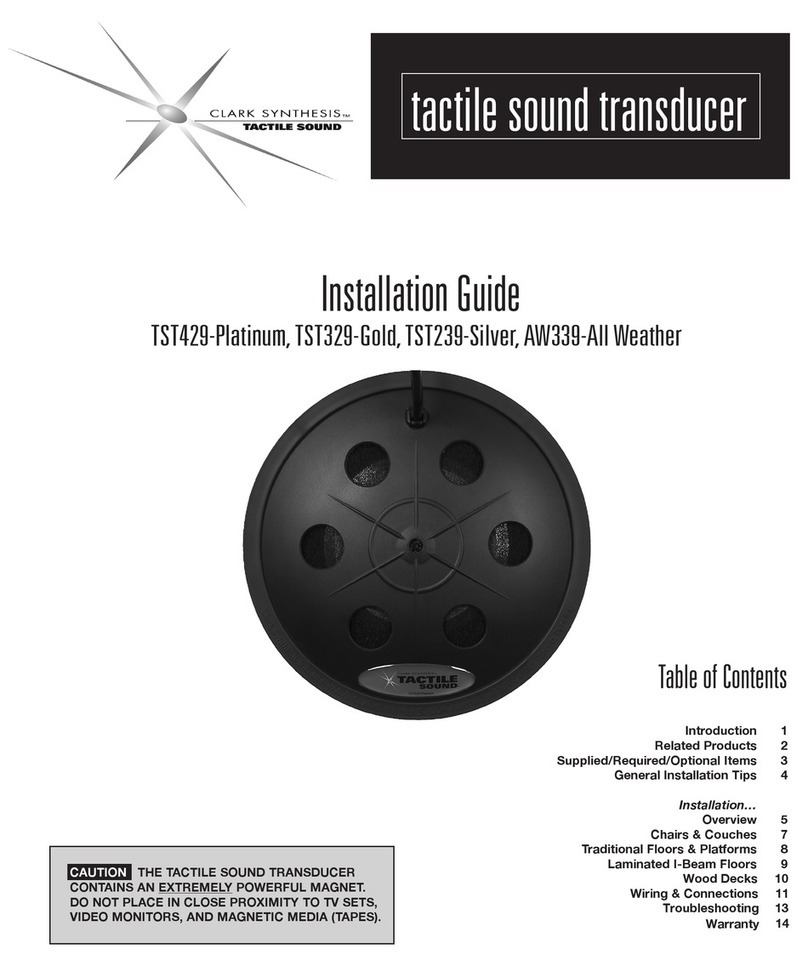
Clark Synthesis
Clark Synthesis TACTILE SOUND AW339 installation guide
